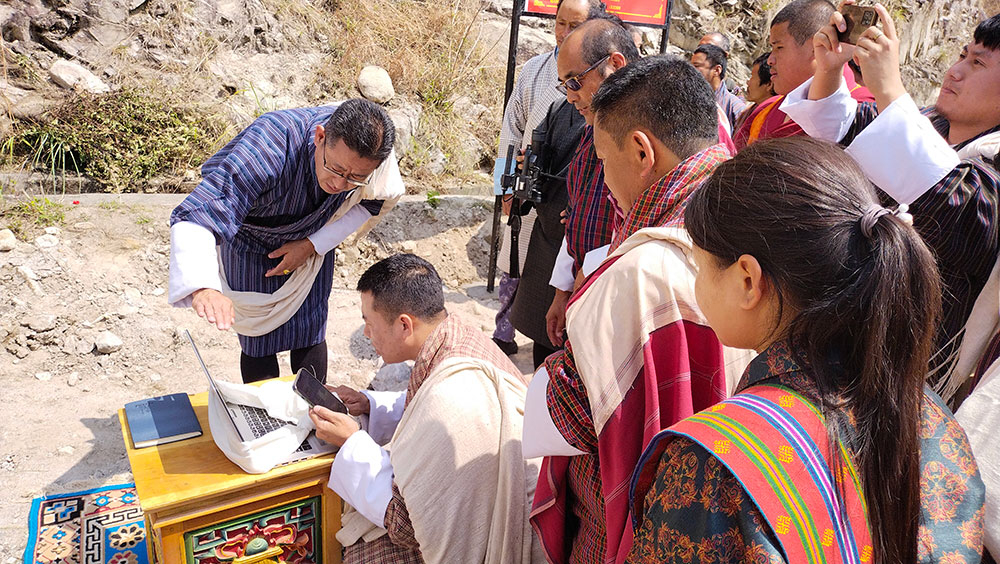Neten Dorji
Trashiyangtse—Yes, smart phones to stop or release water in the irrigation canal when needed. Still don’t believe it? Ask, or better see the farmer of Jamkhar Gewog in Trashiyangtse not only doing that on their smart irrigation canal using the Internet of Things (IoT) but their irrigation canal can also regulate the air temperature, has humidity sensors and cameras.
Around 131 households in the Jamkar and Yangner gewogs will be benefitted from the construction of two separate Smart irrigation canal constructed at a cost of Nu 26.90 million with funding support from the Government of Japan.
“All we need to do is to go to the field and direct the water caretaker to release the water,” says Tashi. “If we do not want water in a certain direction, we simply close the concerned hatch, and the water diverts to another.”
Farmers faced the challenge of insufficient water for cultivating their desired amount of land, all due to the presence of an unpaved village irrigation canal.
“We cultivated less land because of water seepage in the irrigation canal, which led to water shortage. I could cultivate only half and most of the land remained fallow in the past,” Pema Lhendrup said. Pema Lhendrup and his friends are particularly content this year as they are going to cultivate 53 acres of their land at Lhakhang Jab.
“The unlined canal was inefficient, absorbed a lot of water, and it took almost half a day to bring water to our farms,” says another farmer, Sangay Tenzin. “Now, water reaches our farms in 20 minutes, and water wastage will not be a problem anymore.”
High-density polyethylene (HDPE) pipe canal was used for the Smart canal to reduce the loss and waste of water in the canal as it flowed to the farms.
“I could only cultivate a small area of farmland from the one acre of land in Lhakhang Jab area due to poor irrigation in the past. Since the canal has been improved and the water will reach my land, I am planning to cultivate the entire one acre of land,” said Ugyen Lhamo.
Villagers also had to repair and maintain the canal each year to ensure water reached their farmlands.
A farmer, Dorji, 68, said that every year they had to clear the canal and prepare it for the upcoming paddy cultivation season. “In the event of early summer flooding, the canal often required multiple cleanings and had to be restored every year, taking away the time and energy farmers could spend on their crops.”
Jamkhar Gup, Cheku said that the project will bring positive changes and improve the irrigation water system, making it much better than before.
“The Lhakhang Jab irrigation canal will not only benefit my people but also people of Yangner gewog in Trashigang,” he said. “In the absence of a proper canal, many people had given up cultivating their land.”
He said the gewog will ensure that all the people cultivate the land, as the government had spent a huge amount of money to construct the smart canal.
Previously, the farmlands in the village would often remain uncultivated, resulting in a less vibrant landscape. However, armed with a better irrigation system and enhanced knowledge, most villagers were now optimistic about starting paddy cultivation during summer and cultivating vegetables in winter.


